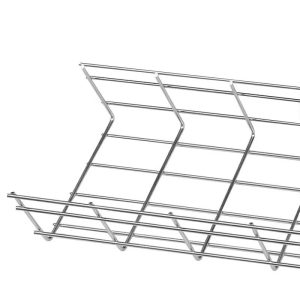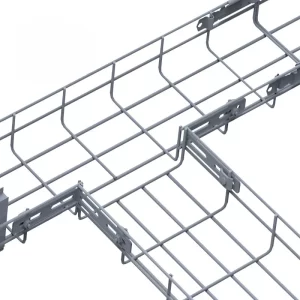The cost of a cable tray per meter can vary significantly based on several factors such as material, type, size, brand, finish, and location (including any applicable taxes or import duties). Cable trays are essential components in electrical installations, designed to support and manage the routing of cables in industrial, commercial, and sometimes residential settings. Here’s a detailed breakdown of the factors influencing the cost:

Material
1. Steel Cable Trays: Steel is a commonly used material due to its durability and strength. Pre-galvanized steel trays are rust-resistant but basic, whereas hot-dip galvanized trays offer better corrosion protection at a slightly higher cost. Prices can range from $5 to $25 per linear meter, depending on thickness and quality.
2. Aluminum Cable Trays: Aluminum is lightweight and corrosion-resistant, making it ideal for outdoor or corrosive environments. It tends to be more expensive than steel but lighter, easier to install, and requires less maintenance. Expect prices around $6 to $30 per meter.
3. Fiberglass Reinforced Plastic (FRP): FRP trays are non-conductive, lightweight, and highly resistant to corrosion, chemicals, and weather. They’re commonly used in chemical plants, offshore platforms, and food processing industries. Prices typically start from $10 to $50 per meter, depending on specifications.
4. Stainless Steel: For applications requiring high levels of corrosion resistance or in harsh environments, stainless steel cable trays are the go-to choice. These are premium options with costs ranging from $20 to over $100 per meter.
Type and Size
Ladder Type vs. Solid Bottom: Ladder-type trays are more open and cheaper, starting at around $5 per meter for basic models. Solid-bottom trays provide full enclosure for cables, enhancing safety and potentially costing 20-50% more.
Width and Depth: Cable trays come in various sizes to accommodate different cable capacities. Wider and deeper trays naturally cost more due to the increased material usage.

Brand and Quality
Well-known brands often charge a premium for their products, which can include better warranties, customer service, and guaranteed quality. Local or lesser-known brands may offer similar products at lower prices, though quality and after-sales service may vary.
Finish and Accessories
Special coatings or finishes for added protection or aesthetics (like powder coating) can increase costs. Additionally, accessories like bends, tees, reducers, covers, and fasteners are necessary for a complete installation and add to the overall project cost.
Location and Market Conditions
Local market conditions, supply chain dynamics, and taxes can influence pricing. Inflation, fluctuations in raw material costs, and import/export tariffs can also play a role.
Installation Costs
It’s important to note that the cost of the cable tray itself is just one part of the total expense. Labor costs for installation, particularly if specialized equipment is required, can significantly impact the overall budget.
To get an accurate estimate for your specific project, it’s recommended to consult with suppliers, contractors, or engineers who can factor in all these variables and provide a tailored quote. Remember to request quotes that include not only the cable tray itself but also all necessary accessories and installation services.

